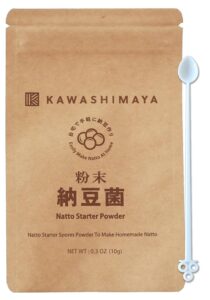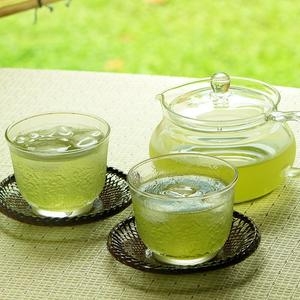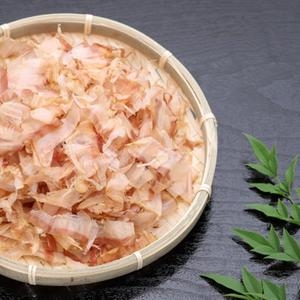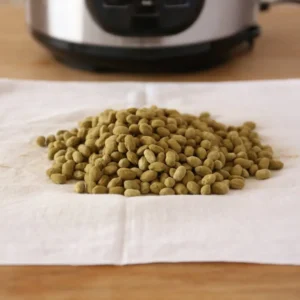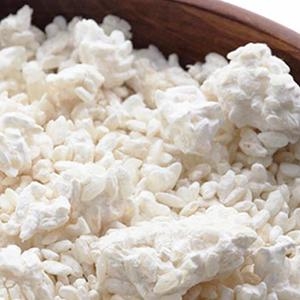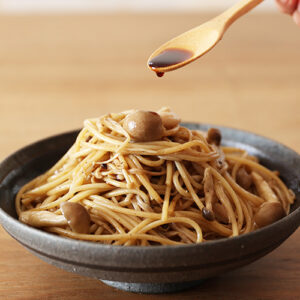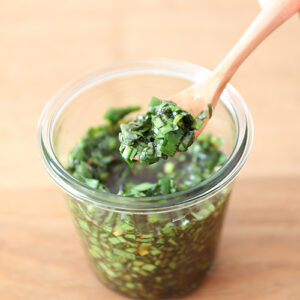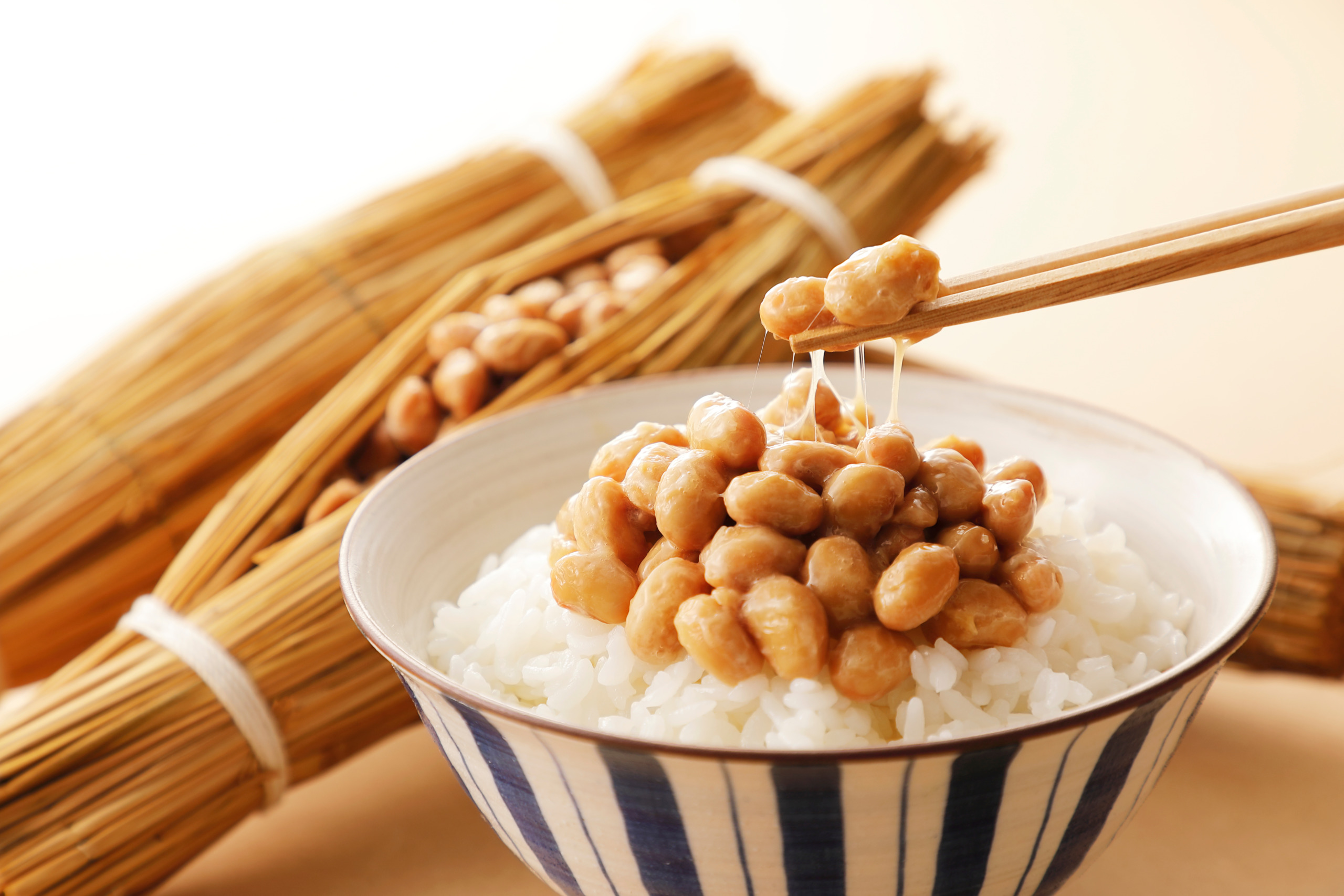
Natto is a popular fermented soybean food in Japan since ancient times. It is considered to have a unique flavor, with a strong smell and sticky texture.
If we look behind that unique taste, natto is rich in nutrients that may even surprise you. Natto has high vitamin K2 content, antibacterial action, and high dietary fiber. The nutrients came from the fermentation process when making natto. You can easily obtain health benefits by eating natto in a little serving.
What is Natto? and what is the proper way to eat natto? In this article, we will show you how to enjoy natto deliciously. We’ll also introduce you to the new variation of natto – the dried natto.
 Content List
Content List
- What is natto?
- What does Natto Taste Like?
- How to Mix Natto?
- Natto Preservation Method
- Signs when Natto goes Bad
- Types of Natto
- Natto Health Benefits
- How to Choose Delicious Natto?
- Natto Dish: How to Deliciously Eat Natto?
- Eat Natto with Toppings
- Natto Miso
- Natto Fried Rice
- Natto Omellete
- Natto FAQ
- Recommended Products for Natto
What is Natto?
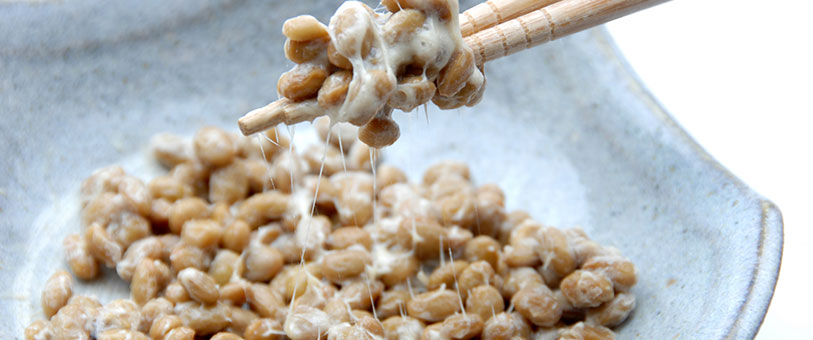
Natto is a traditional Japanese food made from fermented soybeans. It has been known since ancient time. Many people eat natto, so you can say that it is a food that is loved by many generations.
Making natto includes a fermentation process to convert carbohydrates into alcohol or organic acids using microorganisms (natto starter/Bacillus subtilis natto) under anaerobic conditions. Therefore, the ingredients of natto are soybeans and natto starter only.
What does Natto Taste Like?
Natto has a sticky and slimy texture, strong flavor, and a rather strong smell. It’s kind of hard to describe the taste, but natto’s taste is close to old cheese, with a little bit of bitterness. A lot of people love natto, but also many people may dislike it too.
For you who haven’t tried it yet, please try by all means!
It is good to consume natto because it has lots of health benefits. Check here for more information about Natto Health Benefits.
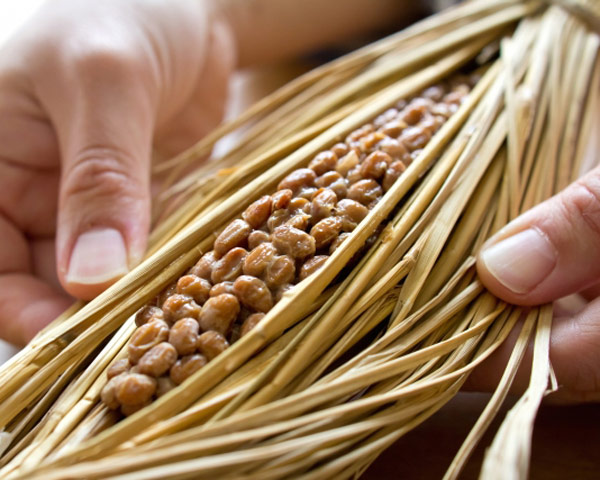
How to Mix Natto?
When you buy natto in a convenient store in Japan or Asian supermarkets, you will usually receive natto (sealed with clear film/plastic), karashi mustard (hot Japanese mustard), and Japanese soy sauce.
The first step is to separate the natto from the clear film. Use a disposal chopstick and stab it into the center of the film. Twist the chopstick around to easily remove the film.
This is an easy method to enjoy natto without having your hand sticky because of natto’s texture.
You need to mix the natto with chopstick before eating it. Mix it until the beans produce lots of thin, sticky strings.
After it become sticky enough, add karashi and Japanese soy sauce. The natto is ready to serve!
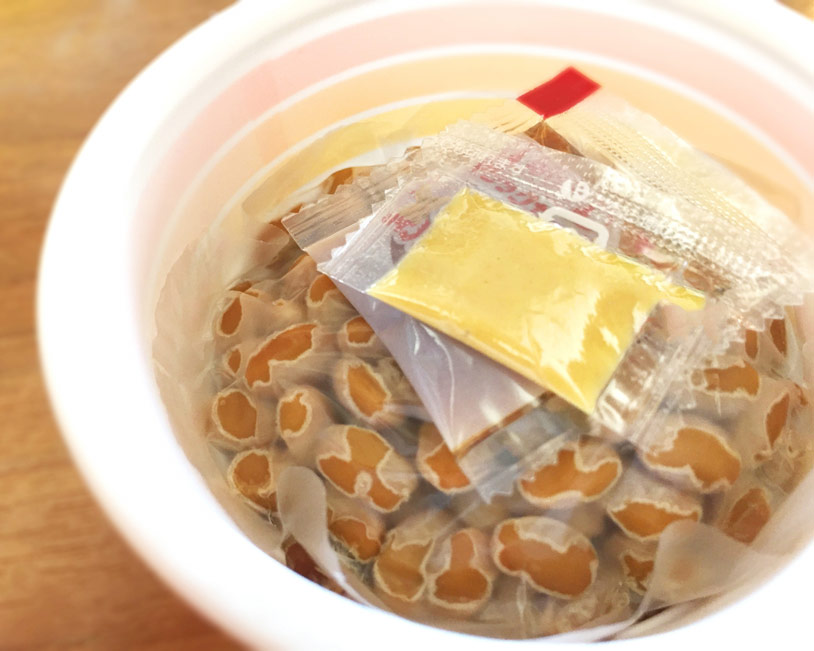
Natto Preservation Method
Homemade and moist natto can be refrigerated for 3 days. 1-3 days of aging in the refrigerator will result in more improved flavor.
However, it will last for more days if you store it in the freezer. Don’t forget to place a piece of clear film or food parchment paper on the top of the beans, and seal the natto with air tight container. If you leave the natto in a place with high temperature, the amino acids will break down and cause an ammonia smell.
On the other side, dried natto is safe to be preserved for a long time at room temperature.
Signs when Natto goes Bad
Natto does spoil. Natto may spoil due to the incorrect way to preserve natto (too long storage time or storing natto in the unsuitable temperature).
There are few signs when your natto goes bad. Please discard it right away when you notice these signs:
– The natto has strong ammonia smell,
– White rough stuff starts to grow and covers the natto,
– The texture is too firm or too soft,
– The color of soybeans are faded.
Types of Natto
There are two types of natto; itohiki natto and tera natto. There is also dried natto – which is safe to be shipped abroad because it is freeze-dried. The types of natto can differ their taste and structure. Feel free to taste it and find your own type!
Itohiki natto
Itohiki natto is the usual natto that we know.
We tried all types of Itohiki Natto so we’ll tell you about our comments and its differences!
Itohiki Natto (stringy natto) can be categorized into 3 types:
1. Marudaizu Natto
Marudaizu or whole-soybeans natto use the whole soybeans and fermenting them to become natto. This type is the most popular one.
The size of the bean used will affect the natto’s stickiness. The bigger the bean, the less sticky things get when you mix it. So if you are new in this “natto world”, choosing bigger beans will be a good choice for beginners.
We also taste the marudaizu natto that is made with black soybean. The taste is more flavourful comparing to the yellow soybeans.
Black soybean are usually using soy sauce and wasabi as their topping. The topping gives a little spiciness at first (wasabi), but it become refreshing once you chew it. As for the smell, black soybean natto has a weaker smell and it won’t bother people who doesn’t really like natto.
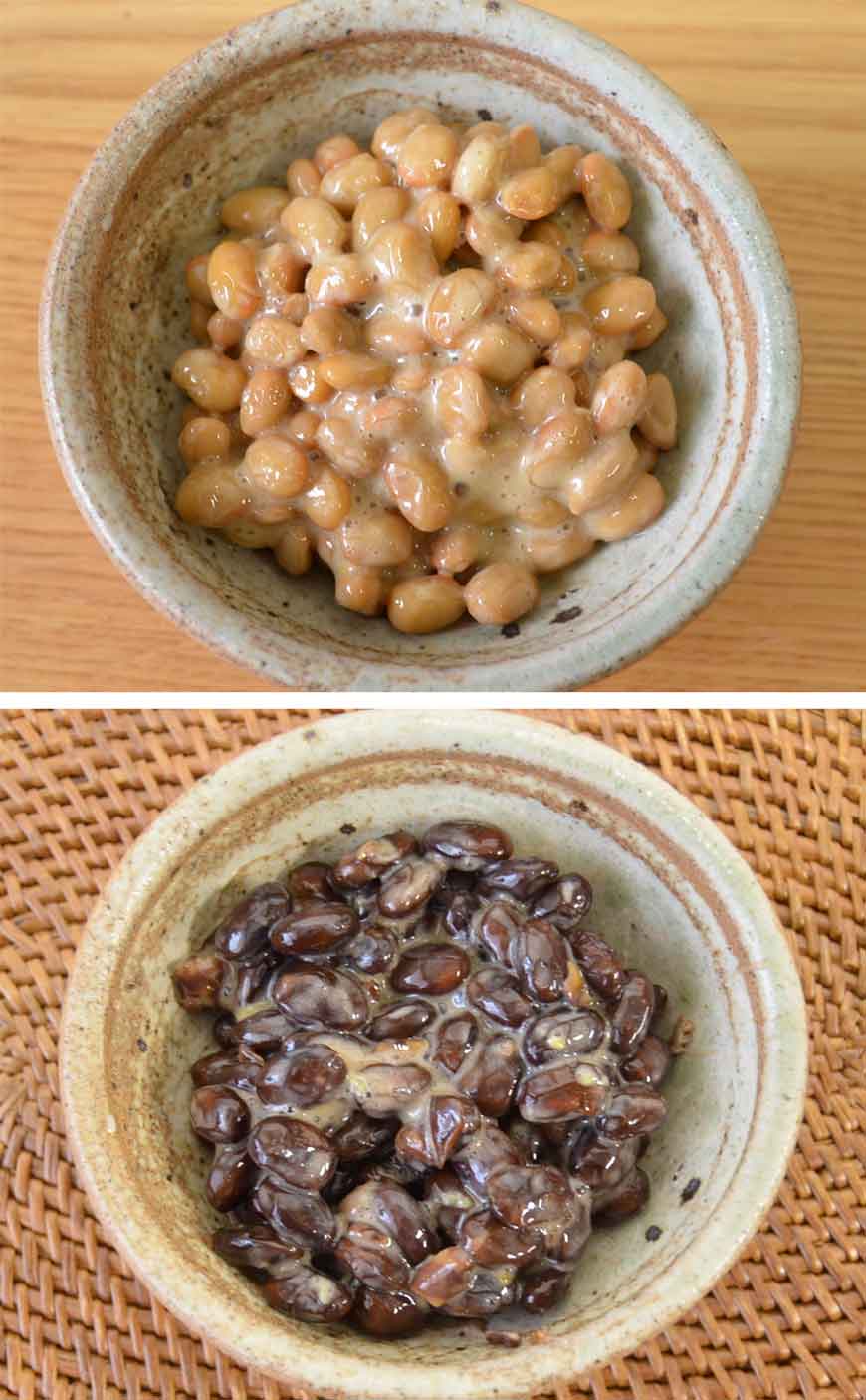
2. Hikiwari Natto
The grounded natto is made by roasting soybeans -> grinding soybeans -> removing the peel -> and boiling soybeans.
This type of soybean creates more surface area for the bacteria to grab onto, making this natto the stickiest and strongest tasting of them all. Hikiwari natto is easy to eat because of its small, chopped sized. The taste is also fresher than marudaizo natto.
I would like to recommend this natto for you who already like to eat natto. Because it is more sticky compared to the usual marudaizu natto, this can be your next challenge in your natto eating experience.
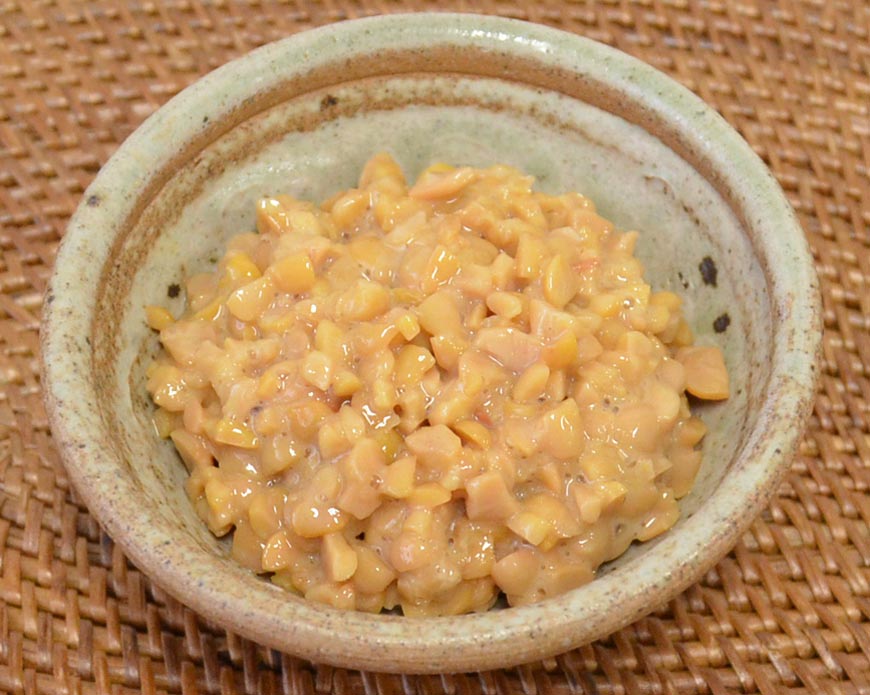
3. Goto Natto
Goto natto is a fermented form of natto, koji (malt), and salt. It took around 1 week to complete the fermentation process. Its origin is from Yonezawa, Yamagata Prefecture.
After having been changed to be made with less salt, it is sold under the name of “Yukiwari Natto.”
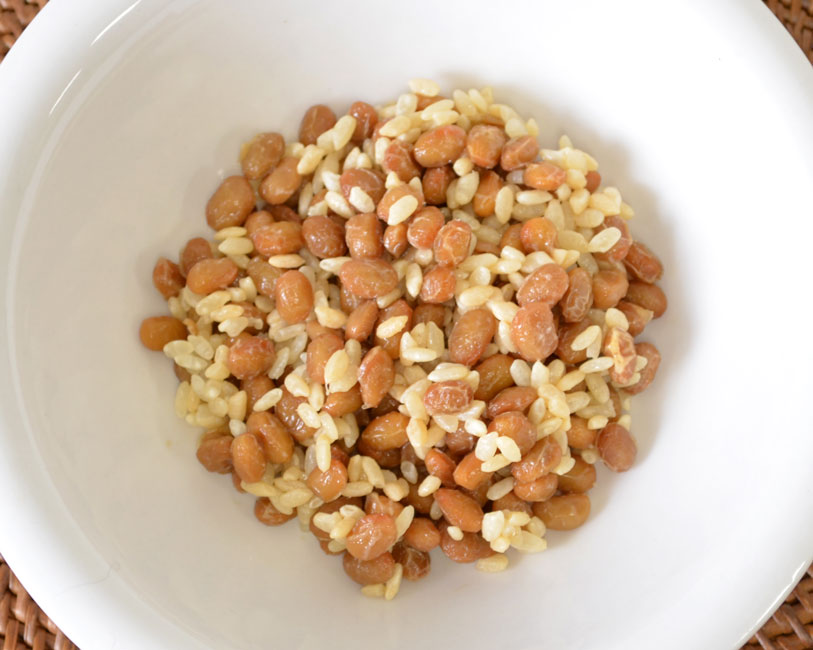
We tried to make the traditional-style of Goto Natto and fermented it for 1 week, and the taste is very amazing!.
At first, we thought that Hikiwari Natto has the strongest taste among all natto variations, but Goto Natto has the strongest taste after all. It has strong aroma and taste, a little bit salty (depends on how much you put the salt) but in the same time, you can enjoy a little bit sweetness from the rice koji.
The texture is not that sticky and sometimes the rice koji is stick into your teeth. The strings became thinner and not as sticky as Marudaizu Natto.
As you can see at the image, the natto’s color became darken because of the fermentation process. Usually, natto’s taste will become awful when you leave it for a few days. But in this case, the beans are still tasty. You can normally eat it with rice or another toppings.
“This combination (natto, rice koji, and salt) increase the umami of natto!”
Not many Japanese people know about this Goto Natto, even we tried to make it for the first time.
So, why don’t you take your try too?
Tera Natto
Another type of natto is called Tera Natto (Shiokara natto or salty natto). Tera natto is said to firstly made by monks in temples. It was produced in one of the Buddhist temple called “Nassho” that became the origin of natto’s name.
Tera natto is another kind of natto that is not stickly. It is a savoury fermented black soybeans that has a similar taste to red miso.
The production is using koji-mold, then salt is added before the mixture is set aside for the fermentation process which took approximately six months.
Like the usual natto, Tera natto can be eaten plain or added to a dishes like miso soup (mix it with hatcho miso will be delicious), or make a kinkan maki.
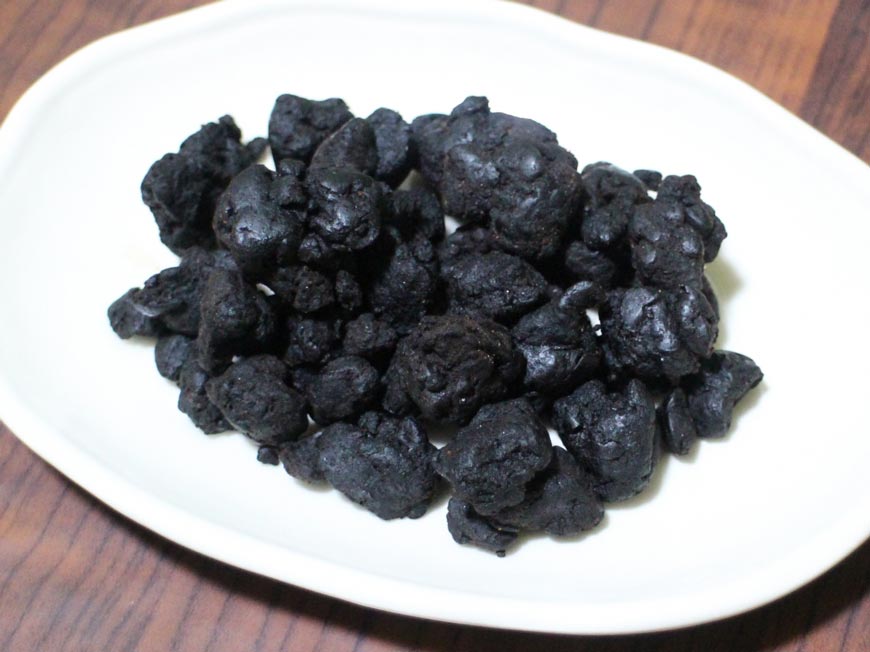
Dried Natto
Dried natto is natto that immediately freeze-dried. In Kumamoto Prefecture, dried natto is called as “Korumame” and it has been popular since ancient times too.
It has the same flavor and taste of natto even it is dried. Also, dried natto is not sticky like normal natto. So it’s easy to consume, and good for those who don’t really like sticky natto but still want to take natto’s nutrients. Instead, the umami and nutrients are improved because it is frozen.
Some commercially available dried natto may contain a lot of salt. However, Kawashima The Japanstore have a salt-free dried natto. It is also free of food additives, salt, sugar, oil, and genetically modified soybeans. So you can consume it without worry. Click here to read more about “Dried Hikiwari Natto 45g (Domestic Soybean 100%)”!
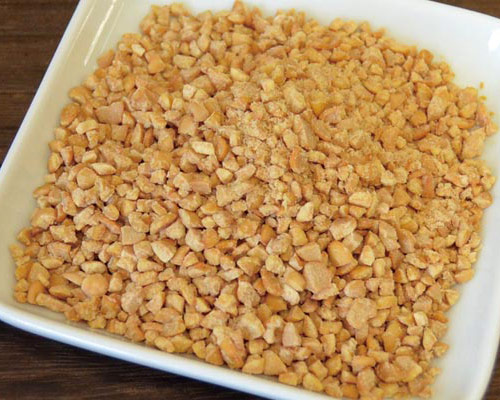
Natto Health Benefits
According to Japanese Population-Based Osteoporosis (JPOS) Study, the consumtion of natto has many benefits such as protection againts breast cancer, prostate cancer, menopausal symptoms, heart disease and osteoporosis. This benefits are derived from the isoflavones inside natto.
These are five health benefits you can get from natto:
#1 Contains Probiotics

The soybeans in natto undergo a fermentation process which creates conditions that promote the growth of probiotics.
Probiotics is the “good” and “helpful” bacteria that have many benefits to our body.
Some of the benefits are they improve your food digestion, as a defense against toxins and harmful bacteria, and can help reduce gas, constipation, and bloating. Probiotic content also help to cure diarrhea.
#2 Rich in Vitamin K

Natto is abundant with vitamin K. A serving of nattō (100g) provides 29% of the Daily value (DV) of vitamin K.
It’s rather easy to find another food with vitamin K1. You can find vitamin K1 in many green vegetables such as spinach.
However, another important K vitamin, vitamin K2, is not as easy to find. Vitamin K2 is produced by bacteria, and natto happens to be rich of it. Vitamin K2 delivers a wide range of health benefits, such as maintaining bone density, supports bone health by increasing bone mass and slowing boneloss, and is associated with lower risk of heart disease, artery calcification and death.
Lack of vitamin K in your bloodstream puts you at risk of osteoporosis, bleeding, and delayed healing of bruises and wounds.
#3 Source for Vitamin C

A serving of nattō (100g) provides 22% of the Daily value (DV) of vitamin C. Natto has higher antioxidant activity capacity than raw soybean because it is fermented.
Vitamin C, or also known as antioxidant vitamins, is among the essential nutrients your body needs. This vitamin is suggested to decrease oxidative damage and could lowering the risk of certain chronic diseases.
It also could boost your immunity by helping the body to fights off infection.
#4 Help You Lose Weight

Natto is the best choice for those who want to maintain a stable weight or when dieting.
It is because natto contains just over 200 calories with 5g of dietary fiber in one serving. This content could help you to control your diet.
The dietary fiber content in natto fullfil 22% of the Daily Value (DV). Good thing about dietary fiber is it makes you feel fuller, so it’s good to eat natto in your breakfast. Dietary fiber also promotes the digestive system to work more effectively.
#5 Good for the Skin

Natto is rich of a vitamin known as pyrroloquinoline quinone (PQQ), which is people little-known about, that is important to maintain healthy, beautiful skin.
Vitamin PQQ can help you maintain a beauty and healthy skin – which makes you look younger.
You can prevent the effects of premature aging. This vitamin is the perfect addition to your diet.
It is also said that the best way to consume soybean is fermented soybean, such as natto, miso, or tempeh.
How to Choose Delicious Natto?

Have you known that the taste and flavor of natto differ greatly depending on the fermentation time and the types of soybean? Choosing the right soy sauce for the topping can also boost its deliciousness.
Pay attention to these 3 points to be able to enjoy delicious natto for your meal!
Fermentation Time
When making natto, you will need to let it rest overnight in the refrigerator before consuming it. The longer you rest it, the stronger the taste you will have. By resting the natto in the fridge, the amino acid composition of soy protein will enrich the flavor of natto.
To learn more about how to make natto, please refer to our article below!
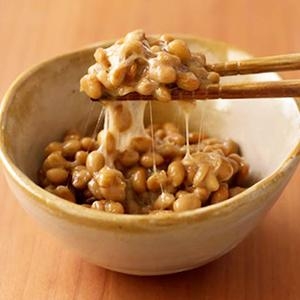
Types of Soybean
Types of soybean that is recommended for making natto are the small grain and pesticide-free soybeans.
Smaller beans are more recommended to make natto, especially for first timers, as it is more efficient for the fermentation process to happen.
It is also important to use pesticide-free and organic soybeans for making natto. Natto made from organic soybeans will the better choice to maintain our health.
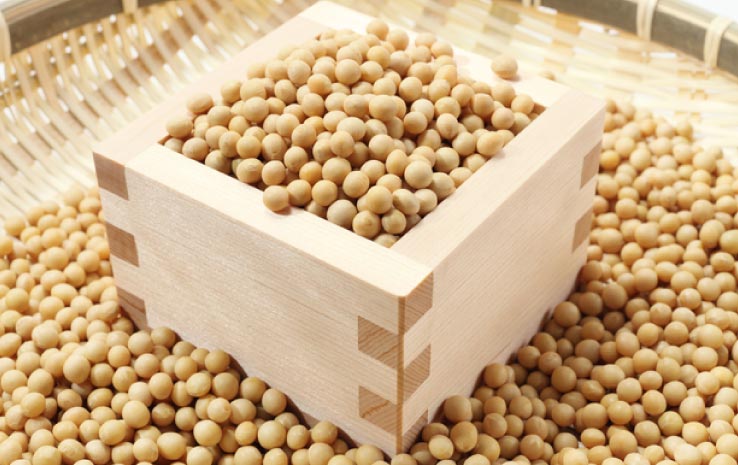
Japanese Soy Sauce (Shoyu)
The popular and delicious way to enjoy natto is to eat it with shoyu (Japanese soy sauce). Simply mix one pack of natto, add 1 teaspoon of shoyu and mix again.
Choosing the shoyu that is rich in umami and made with natural ingredients will boost the natto’s flavor.
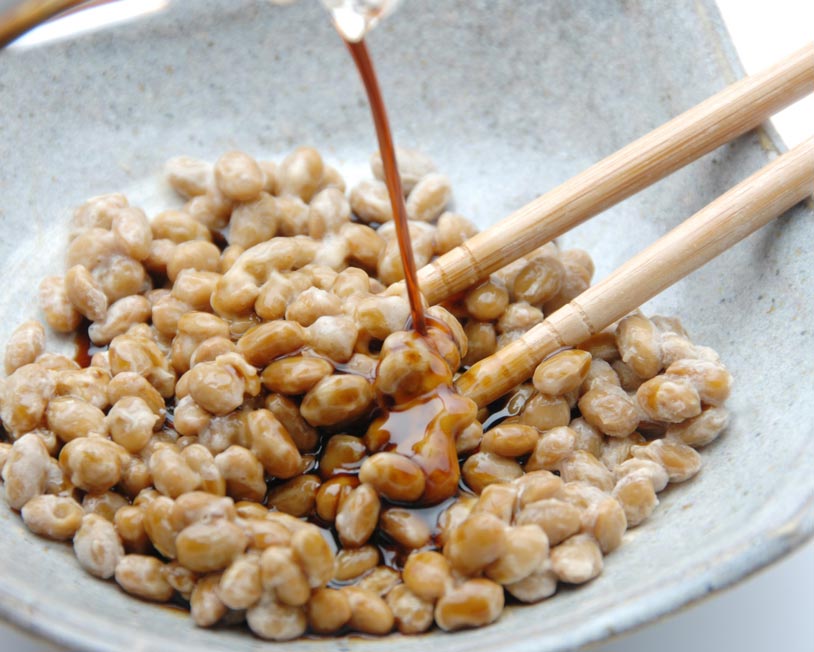
Natto Dish: How to Deliciously Eat Natto?
Natto is said to be Japanese-style breakfast’s classic menu. Almost all of the Japanese households have stocks of this fermented food. Some people can’t eat it, but you can’t argue that natto has nutrient benefits for your health!
As natto is a versatile food, there are many delicious ways to eat natto. You can eat as it is, as dressings, or use it in cooking. One of these methods may become your favorite, so please check it out!
Eat Natto with Toppings
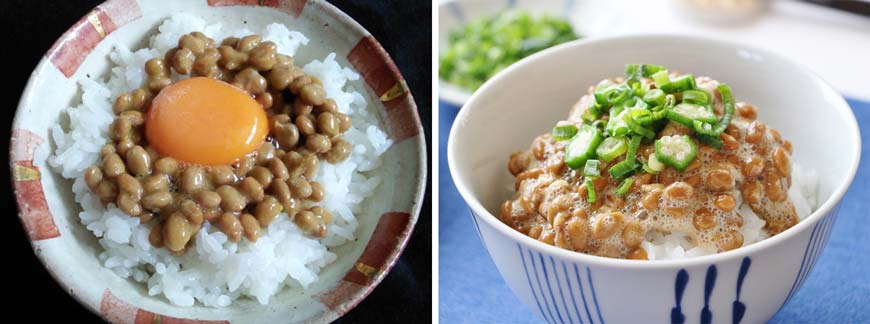
Japanese people would love to eat their natto with toppings. You can use raw eggs, shoyu (Japanese soy sauce), chopped scallions, karashi (Japanese mustard), wasabi (recommended for black soybean natto), nori (seaweed), kimchi, etc.
Japanese people said that rice is one of the best natto partner, especially when the rice is still warm. When you put natto with rice and raw egg, it become natto tamago kakegohan (rice mixed with raw egg plus natto as the topping). But eating it by itself will also be a good choice. You will be able to taste the unique, delicious taste of natto directly into your mouth!
Make sure to stir/mix your natto thoroughly before adding the topping. You can put your favorite topping at your own preference afterwards. Some topping will need another stir to make the taste even and delicious (shoyu and karashi, for example).
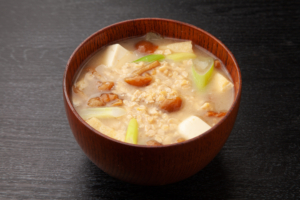
Natto Miso
Ingredients
- 2 tbsp Red Miso Paste
- 2 cups Dashi
- 2 tbsp Natto
- Wakame seaweed At your preference
- ½ block Tofu
- Scallions for garnish (optional)
Instructions
- Bring the dashi into simmer in a soup pot.
- Add natto into the liquid and simmer for more 2 minutes.
- Place the miso paste with spoon into the pot and dissolve it into the dashi with chopstick.
- Add the wakame seaweed and tofu and simmer for another 30 seconds.
- The soup is ready to serve. Optionally garnish with scallions.
For more info about Dashi and Red Miso Paste used in this recipe, please refer to our article below!
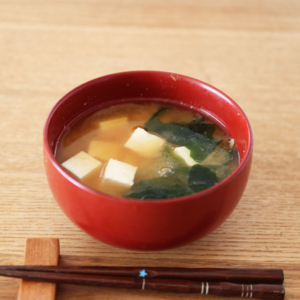
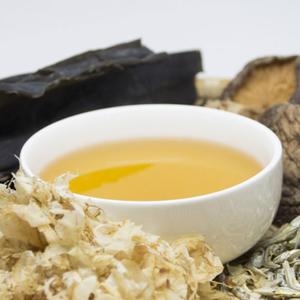

Natto Fried Rice
Ingredients
Instructions
- Combine natto and eggs in a bowl and mix well.
- Heat olive oil in a skillet.
- Add the cooked rice with natto and egg mixture. Cook and mix until heated through in light brown color.
- Add soy sauce, salt, and ground black pepper to taste.
- Optionally garnish with scallions on top.

Natto Omelette
Ingredients
- 1 Pack Natto
- 3 Eggs
- 1 tbsp Oil
- 1 Spring onion, chopped (optional)
Instructions
- Mix natto in a bowl. Add egg and chopped spring onion, and mix well.
- Heat oil in a frying pan. Add the egg mixture and cooked until light brown.
- Carefully flip the natto omellete and cook the other side for more minutes.
- Serve on a plate while hot.
Natto FAQ
- What is natto? And what does natto taste like?
- Natto is a traditional Japanese food made from fermented soybeans. The ingredients of natto are soybeans and natto starter (bacillus subtilis natto).
The taste of natto often described as close to old cheese’s taste. It has a sticky and slimy texture, strong flavor, and a rather strong smell.
- Is natto good for you?
- Consuming natto maximum 2 packs per day will give you lots of health benefits:
- 1. Contains Probiotics (Good bacteria for our body)
- 2. Rich in Vitamin K (for bone health)
- 3. Source for Vitamin C
- 4. Help You Lose Weight
- 5. Good for the Skin
- How to eat natto?
- As natto is a versatile food, there are many delicious ways to eat natto. You can eat as it is, as dressings, or use it in cooking (Check the recipe for: Natto Miso, Natto Fried Rice, Natto Omellet).
Japanese people would love to eat their natto with toppings. You can use raw eggs, shoyu (Japanese soy sauce), chopped scallions, karashi (Japanese mustard), wasabi (recommended for black soybean natto), nori (seaweed), kimchi, etc.
- Where can I buy natto?
- Fresh natto is delicious when you buy it from Japan’s grocery store or Asian supermarket. Natto can’t be purchased online due to its short storage time.
Making homemade natto can be your solution when you can’t buy natto directly. You can also buy dried natto in online shops because it’s safe to be shipped overseas.
Recommended Natto Products
Natto is food with a unique taste that has tons of health benefits.
However, fresh natto will degrade quality if it is shipped overseas. So, if you can’t find fresh natto in your country, it’s good to make your homemade natto. At our shop, we are shipping fresh Bacillus subtilis natto (natto starter) and organic soybeans abroad for making natto.
There is also dried natto. The freeze-dried natto with the same taste of the usual natto. Because it is dried, you can enjoy it without worry even if it’s shipped abroad.
Shoyu is also an important must-have item if you want to taste natto. The shoyu from Matsumoto Shoyu Store is made with high-quality ingredients that let you taste the authentic taste of Japanese soy sauce.
Please take a look!
Also Available On Amazon USA
Natto Starter Spores Powder 3g – 100% Organic Soybean Extract
Easily make natto at home with this natto starter powder to get the best health benefits of natto every day! We use 100% purely cultured natto starter extracted from organic soybeans (not genetically modified). Compared to the general natto starter, this product is characterized by its strong fermentative power.


